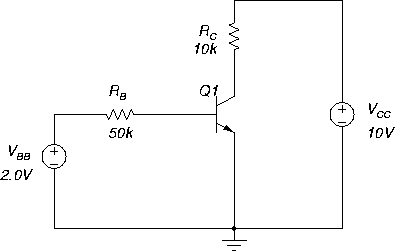 |
Load the PSPICE file bjt-dc1.sch, Figure 33.
Exercise:
Lecture Notes : BJT Transistor Circuits : Introductory BJT Circuits : Transistor as a SwitchOn or off refers to extreme operating points corresponding to saturation or cut-off respectively. When on a substantial current flows (order mA), while when off only a small current flows (order few
A or less).
Note also the values of VBE and IB (add trace).
Also graph IC versus VBE.
ANU Engineering - ENGN2211